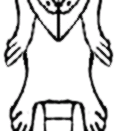"As Long as Grass Grows and Water Runs" is an article written by Howard Zinn. I found the article from "A People's History of the United States". Howard Zinn claims to show a series of controversial facts about the Revolutionary war and Indian removal.
Howard Zinn states the main historical facts of the early 1820's and all 120,000 Indians that lived east of the Mississippi. Jackson was a land speculator, merchant, slave trader, and the most aggressive enemy of the Indians in the early American history. Jackson soon established the tactic of promising rewards in land and goods. When the war ended, Jackson and friends of his began buying up the seized Creek lands.
Zinn states that Rogin said it was "the largest single Indian cession of southern American land." Jackson's 1814 treaty with the Creeks started something new and important. Settlers moved into Indian lands and there fore the Indians attacked because their land was invaded.
It is known to all white men, that Indians are not deceitful. The white men spoke badly about the Indians and looked at them unpleasantly. Indians do not steal. If the Indians would only move to new lands across the Mississippi, Cass promised in 1825 at a treaty council with Shawnees and Cherokees, The United States will never ask for your land there. Everything in the Indian heritage spoke out against leaving their land, but the Whites were still encouraged to settle on Indian land.
Among the evidence that Zinn cites about the Indians, were federal treaties and federal laws that gave Congress, not the states, authority over the tribes. Jackson ignored this, and supported state action. Thousands of whites invaded and destroyed Indian property. Jackson ordered federal troops to remove them, but also ordered Indians as well as...


